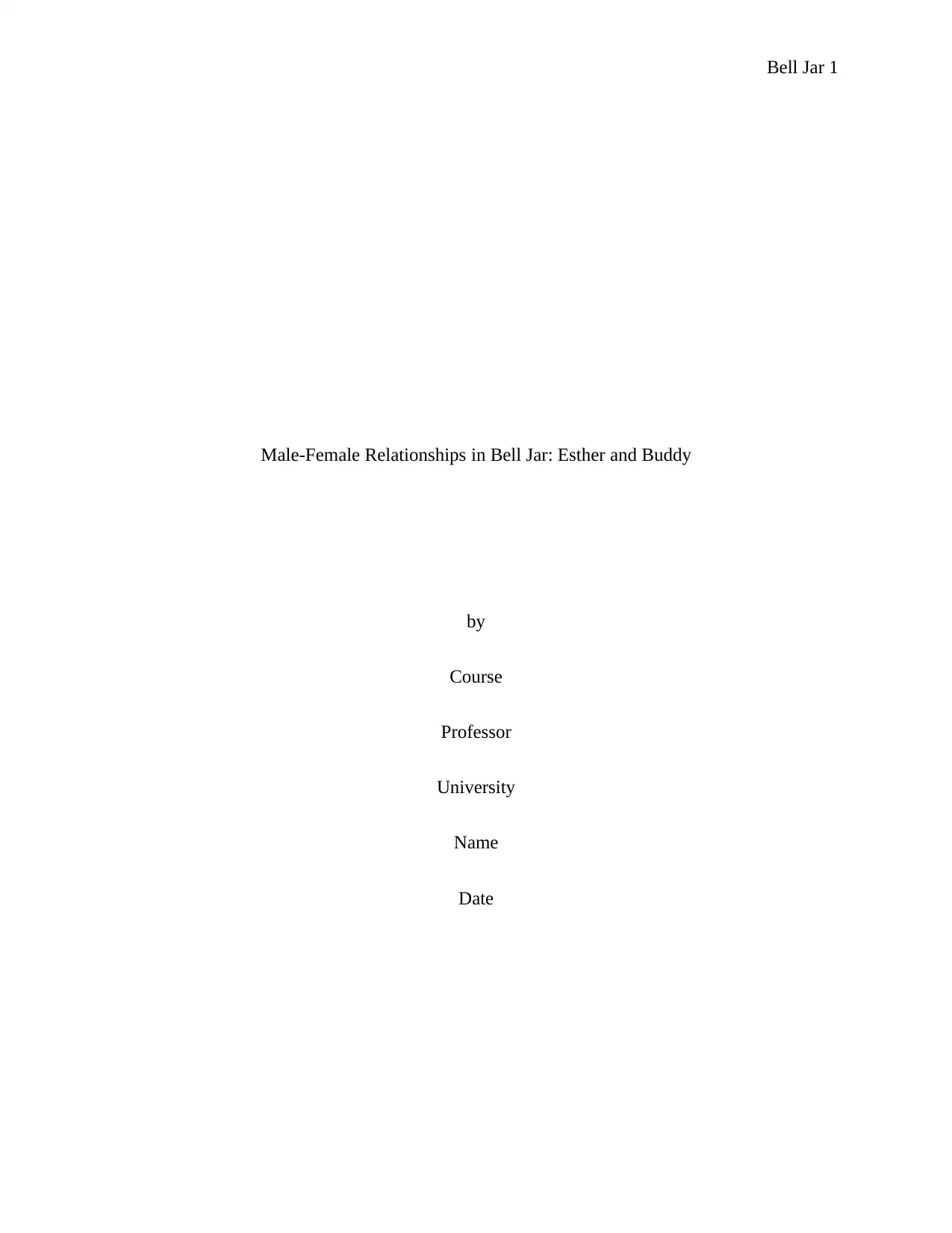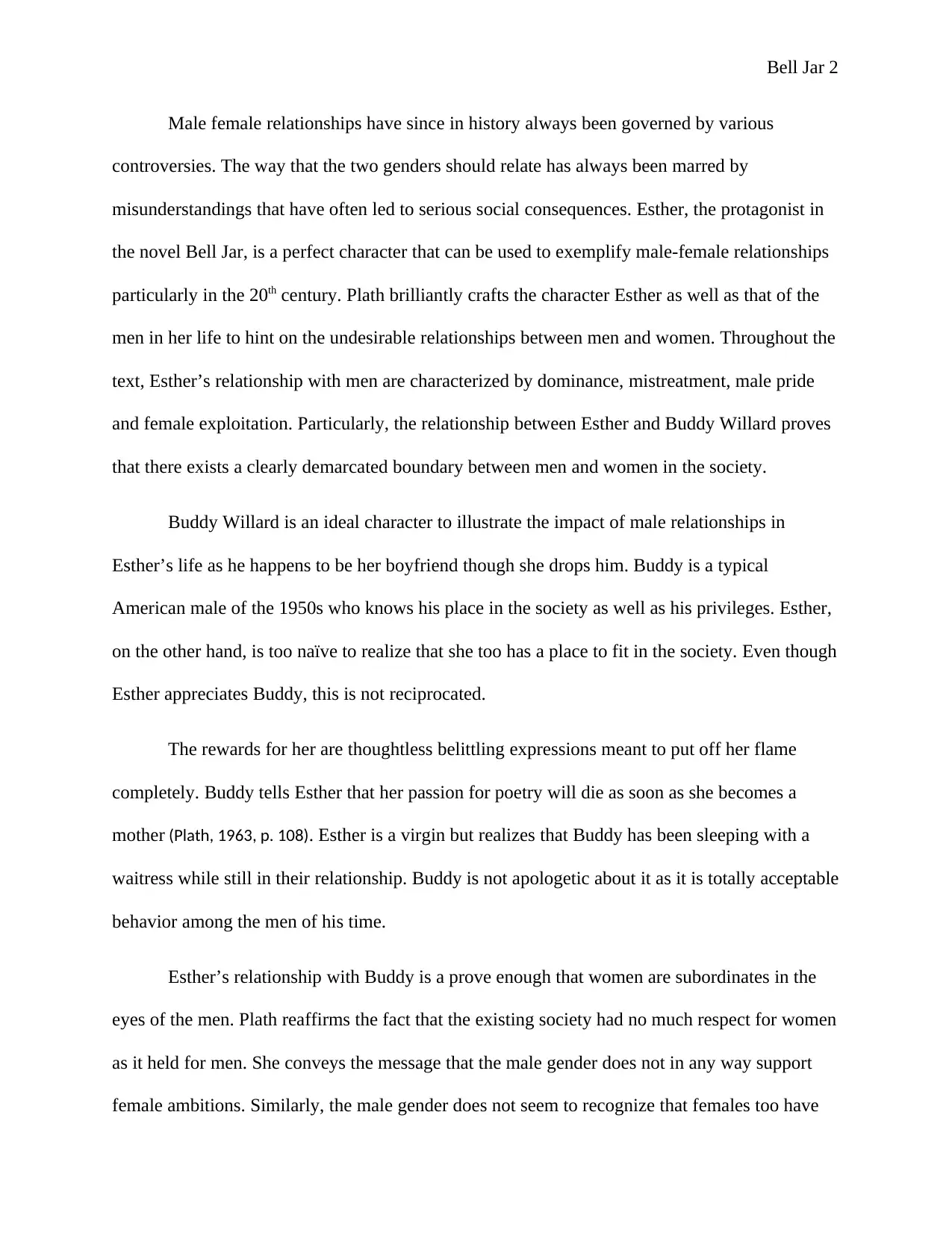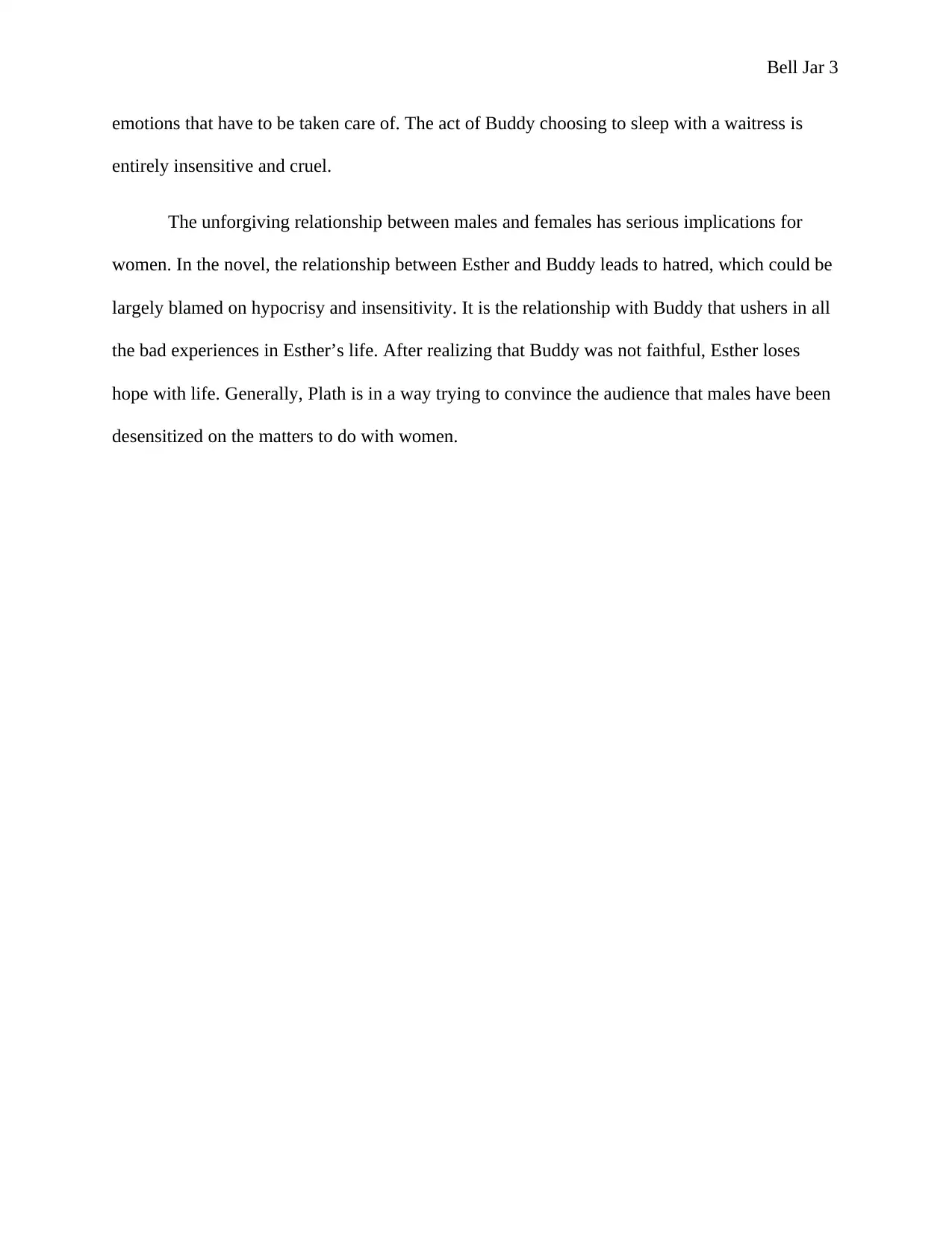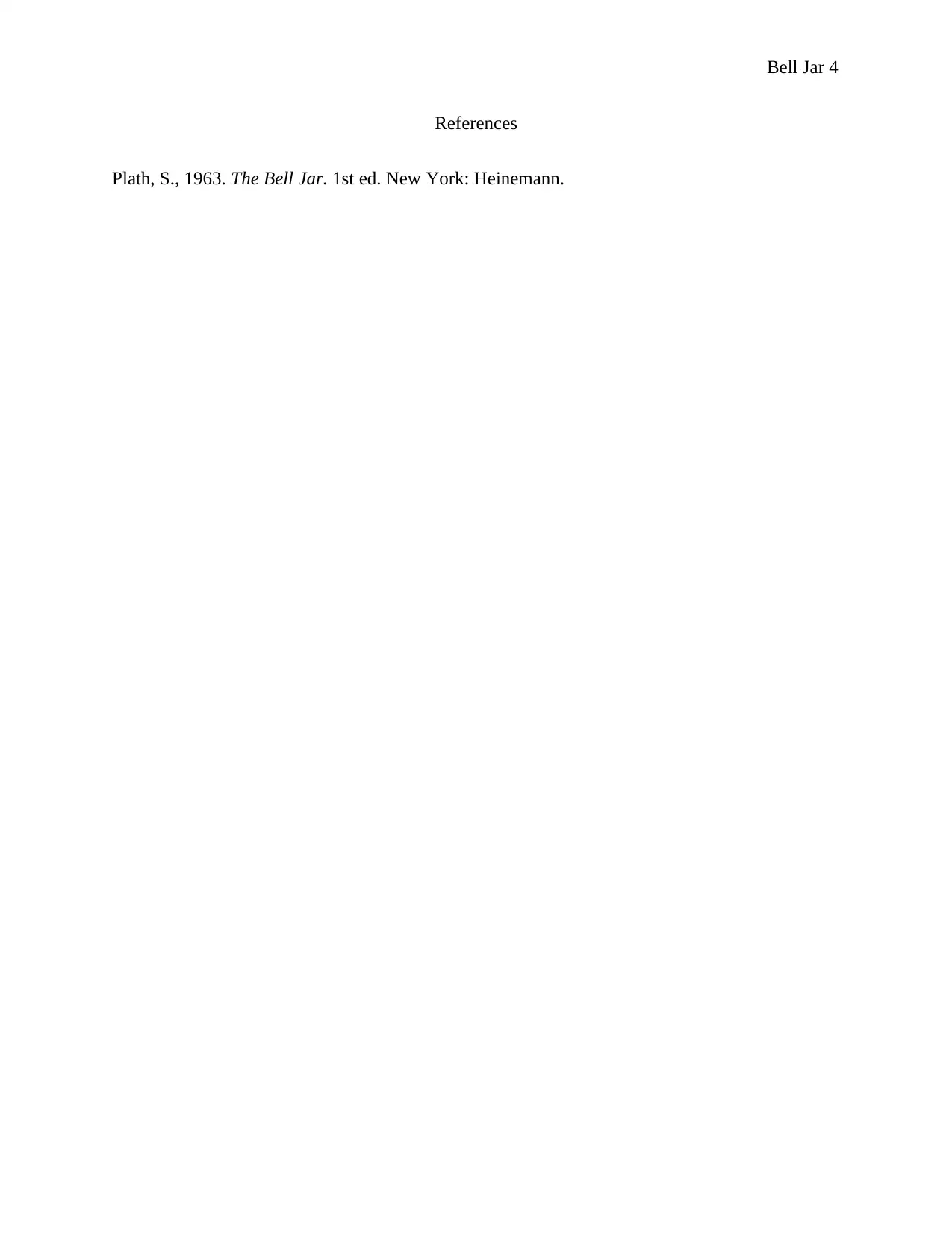Bell Jar: Male-Female Relationships, Course Name, University
VerifiedAdded on 2022/12/27
|4
|537
|49
Essay
AI Summary
This essay analyzes the male-female relationships in Sylvia Plath's 'The Bell Jar', focusing on the interactions between Esther Greenwood and Buddy Willard. The essay explores themes of dominance, mistreatment, male pride, and female exploitation within the context of 1950s societal norms. The relationship between Esther and Buddy is used to illustrate the power imbalances and lack of respect for women prevalent during that era. The essay highlights how Buddy's actions, such as his infidelity and dismissive attitude towards Esther's aspirations, reflect the societal devaluation of women and their ambitions. The essay also examines the emotional consequences of these relationships, emphasizing the impact of hypocrisy and insensitivity on Esther's well-being and her subsequent disillusionment. Through this analysis, the essay suggests that Plath critiques the societal structures that contribute to the marginalization and mistreatment of women. The essay also references Plath's novel to support the argument that the male gender does not in any way support female ambitions.
1 out of 4











![[object Object]](/_next/static/media/star-bottom.7253800d.svg)